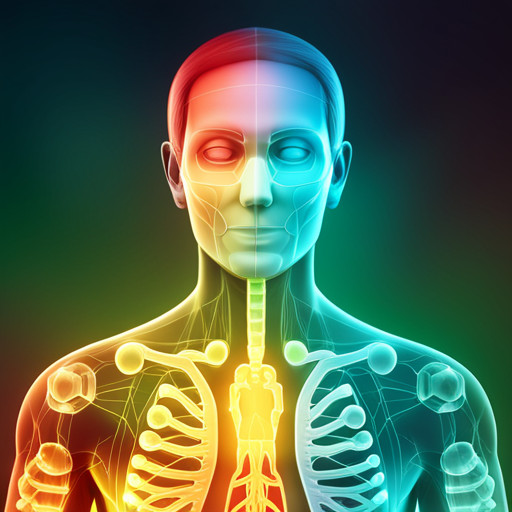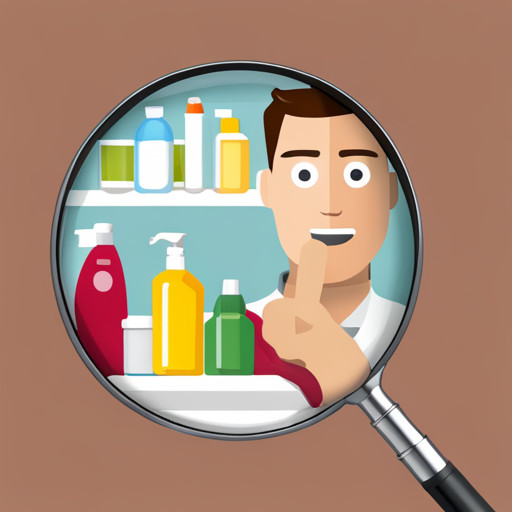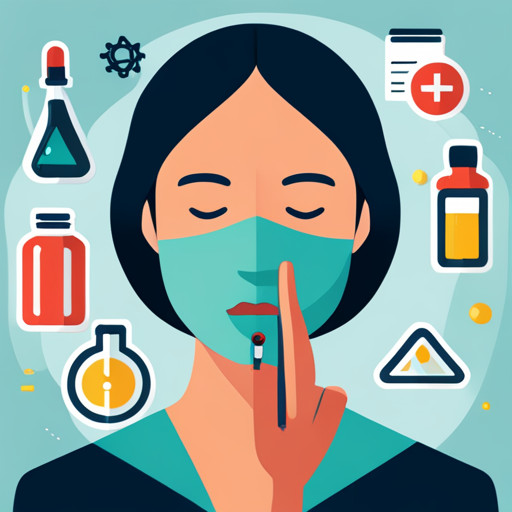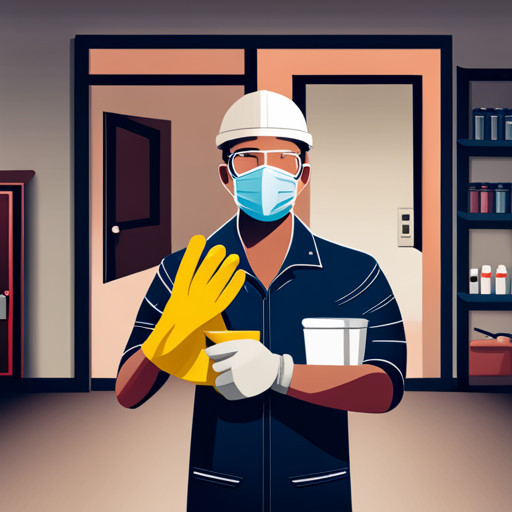Recognizing Early Signs of Chemical Exposure Toxicity
This article explores the early signs of chemical exposure toxicity.

It commences with an overview of basic understanding about chemical exposure, proceeds to discuss common chemicals and their potential harmful effects, then identifies symptoms associated with early toxic exposure.
The essential role of medical evaluation in detecting such toxicity is reviewed before concluding with preventive measures to reduce exposure to harmful chemicals.
Key Takeaways
- Early recognition of symptoms is crucial in preventing progression to serious health conditions.
- Symptoms can include nausea, headaches, and skin irritations.
- Long-term exposure can lead to respiratory problems and neurological damage.
- Recognizing the sources of exposure is important for prevention efforts.
Understanding the Basics of Chemical Exposure

Understanding the basics of chemical exposure involves comprehending how harmful substances enter the body, and the subsequent physiological reactions that occur as a result. This fundamental knowledge forms an integral part of Chemical Resistance Education, which aims to equip individuals with the necessary skills to identify and mitigate potential dangers associated with hazardous chemicals.
Chemical agents can infiltrate the human biological system via three primary pathways: inhalation, ingestion, or skin contact. Inhalation is often seen as the most common route of entry due to its direct access to the respiratory tract and circulatory system. Ingestion generally occurs inadvertently through contaminated food or water sources. Skin contact may lead not only to local effects such as burns or rashes but also systemic toxicity if chemicals penetrate through dermal layers into blood vessels.
Upon entering the body, these toxicants interact with specific cellular components resulting in varying degrees of physiological responses. These range from minor irritations and allergic reactions in less severe cases, to disruptions in metabolic processes at molecular levels potentially leading towards chronic diseases and genetic abnormalities in more extreme situations.
Environmental factors also play a significant role in defining Exposure Risk Factors for chemical hazards. These include but are not limited to: concentration and duration of exposure, physical state of chemical (solid, liquid, gas), temperature conditions influencing evaporation rates (for volatile compounds) and individual susceptibility based on age, gender, health status among others.
Common Chemicals and Their Potential Harmful Effects

Common substances such as pesticides, cleaning agents, and solvents often harbor potential deleterious effects on human health. These materials, commonly found in households and workplaces, can become toxic when ingested, inhaled or absorbed through the skin. The impact of these household toxins is particularly concerning given their widespread use.
Pesticides are a common household substance with significant toxicity potential. Exposure to pesticides can lead to various health issues ranging from irritation of the skin and eyes to more serious conditions like cancer or endocrine disruption.
Cleaning agents also pose significant risks due to their chemical components which may include ammonia, bleach and other volatile organic compounds (VOCs). Chronic exposure to these chemicals can cause respiratory illnesses, burn injuries and even neurological effects.
Solvents used in work environments constitute another major source of harmful chemicals. Workplace chemical dangers include the risk posed by substances like benzene, perchloroethylene (used in dry cleaning), paint thinners and glues. These chemicals have been linked with central nervous system depression, liver damage and cancer among other health conditions.
Identifying Symptoms of Early Chemical Exposure Toxicity

Identification of symptoms associated with initial interaction to hazardous substances is critical in preventing progression to serious health conditions. Early recognition of indications can significantly influence the toxicity timeline, thereby mitigating potential risks and outcomes.
Exposure sources are varied, spanning from domestic households to industrial environments. These include but are not limited to cleaning products, pesticides, paint fumes, automotive exhausts and industrial emissions. The nature of these substances often leads to a wide range of symptoms linked with exposure.
Early signs of chemical exposure toxicity might manifest as minor physiological changes such as nausea, headaches or skin irritations; however, these signs should not be dismissed due to their seeming insignificance. It is essential that these early symptoms are recognized quickly within the toxicity timeline for prompt action to be taken.
Long-term exposure could lead to more severe complications such as respiratory problems or neurological damage depending on the substance involved and its concentration level during exposure. It is important that both immediate and long-term effects are considered when assessing potential toxic exposures.
In addition, recognizing the sources of chemical exposure contributes immensely towards prevention efforts. For instance understanding that certain household cleaning products contain potentially harmful chemicals could lead to safer handling practices being adopted.
Given this information it becomes clear that knowledge about early signs of chemical exposure toxicity and understanding the role played by different exposure sources can effectively reduce health risks related with hazardous substances.
The Role of Medical Evaluation in Detecting Chemical Toxicity

Medical evaluation plays a pivotal role in detecting the presence and extent of hazardous substance toxicity within an individual's system. Through comprehensive examinations, healthcare professionals can establish the existence of harmful substances, quantify their concentrations, and evaluate their potential harm. This process is crucial in determining toxicity thresholds - levels at which a particular substance becomes harmful to human health.
Toxicity thresholds vary significantly among different substances and individuals. Factors such as age, gender, overall health status, genetic predisposition, and previous exposure history often influence these thresholds. By identifying them accurately through medical evaluations, practitioners can initiate appropriate treatment protocols promptly and effectively.
Treatment protocols for chemical exposure toxicity aim to reduce or eliminate the toxic substance from the body while managing symptoms to improve patient comfort and outcomes. These protocols typically encompass decontamination procedures (if necessary), supportive care measures such as hydration or oxygen supplementation, specific antidotes if available for the toxin involved, or chelation therapy for heavy metal poisoning.
In scenarios where immediate treatment is required due to high toxicity levels exceeding established thresholds - aggressive interventions might be implemented. These may include hemodialysis or hyperbaric oxygen therapy depending on the nature of the toxicant involved.
The complexities associated with chemical exposure toxicity underscore the need for robust medical evaluations capable of not only identifying presence but also quantifying the extent of exposure accurately. Such precision enables timely intervention following appropriate treatment protocols, thus improving prognosis substantially.
Ultimately, it is through detailed medical evaluation that potentially life-threatening situations arising from chemical exposure can be swiftly identified and managed — highlighting its fundamental importance in this context.
Tips to Prevent and Reduce Exposure to Harmful Chemicals

Prevention and reduction of harmful chemical exposure can be effectively achieved through a variety of strategies.
One strategy is utilizing personal protective equipment (PPE) in occupational settings where workers might come into contact with hazardous substances. PPE, including gloves, goggles, and respiratory protection devices, shields the body from direct contact with harmful chemicals.
Another strategy is adhering to established safety guidelines. These protocols are designed based on extensive research and aim to mitigate the risk associated with handling or being exposed to hazardous materials. They provide detailed instructions on safe practices like correct storage procedures for different classes of chemicals or emergency response measures in case of accidental spillage.
Proper ventilation is also crucial in reducing exposure risks. Inadequate ventilation can result in accumulation of toxic fumes within enclosed spaces, leading to potential health hazards. Therefore, workplaces dealing with volatile substances should ensure sufficient air circulation by maintaining functional exhaust systems and regularly monitoring air quality.
Furthermore, adopting green cleaning alternatives presents an effective way to both prevent chemical exposure and promote environmental sustainability. Green cleaning products are formulated using naturally derived ingredients that pose less hazard compared to conventional cleaners laden with harsh synthetic chemicals.
Lastly, maintaining good hygiene practices such as washing hands thoroughly after contact with chemicals prevents ingestion or absorption through the skin, thus significantly mitigating exposure risks.
Frequently Asked Questions
What Are the Legal Regulations Surrounding Chemical Exposure in the Workplace?
Legal regulations concerning workplace chemical exposure entail mandatory Workplace Inspections to ensure safety protocols. Non-compliance can result in Compensation Claims by affected employees, regulated by laws like the Occupational Safety and Health Act (OSHA).
How Can One Advocate for Safer Chemical Practices in Their Community?
Advocacy for safer chemical practices in communities involves effective community activism and comprehensive chemical education. Awareness campaigns, educational workshops, lobbying for stricter regulations, and promoting best practices constitute essential strategies for this purpose.
Are There Any Home Remedies to Alleviate Symptoms of Early Chemical Exposure?
Scientific research indicates that detoxification methods and natural antidotes may alleviate symptoms of chemical exposure; however, these should not replace professional medical treatment for potential toxicity, but complement it under professional guidance.
How Does Long Term Chemical Exposure Impact the Environment?
Long-term chemical exposure detrimentally impacts environmental sustainability by contaminating water sources, degrading soil quality, and disrupting ecosystems. This results in significant wildlife impact, including species extinction due to habitat loss and decreased biodiversity.
What Steps Are Researchers Taking to Develop Safer Alternatives to Harmful Chemicals?
Researchers are focusing on Green Chemistry advancements and Sustainable Material Development to create safer chemical alternatives. They aim to reduce environmental impact while maintaining efficacy, by designing less hazardous chemicals through innovative scientific methods and technologies.
Conclusion
In conclusion, recognizing the early signs of chemical exposure toxicity plays a significant role in preventing severe health issues.
Proper understanding of common harmful chemicals and their effects, alongside timely medical evaluation, facilitates accurate detection of chemical toxicity.
Therefore, implementing strategies to reduce exposure to these potentially detrimental substances remains crucial for maintaining optimal public health.

This post has been generated by AI and was not reviewed by editors. This is Not legal advice. Please consult with an attorney.




